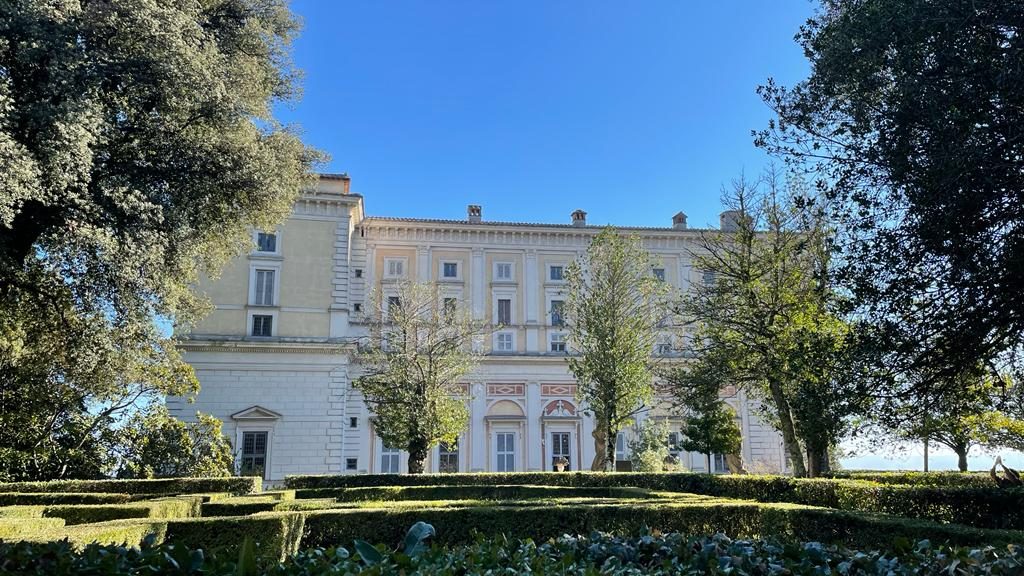
Renaissance Art and History – A day trip to Villa Farnese
As a part of our orientation we went to Caprarola to visit Villa Farnese. The town is surrounded by volcanic hills and the view of the region from the entrance of the villa is breathtaking.
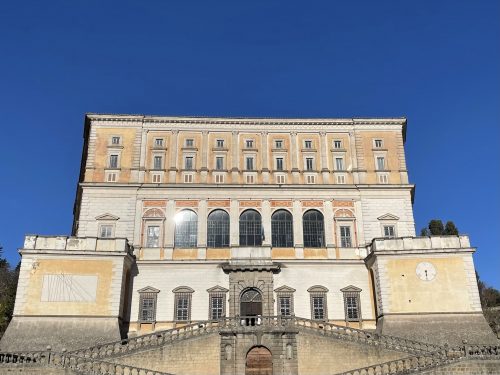 Palazzo Farnese
Palazzo Farnese
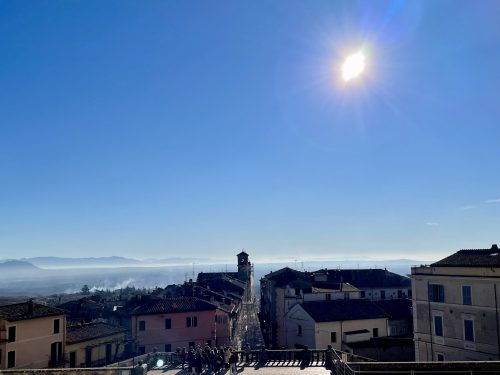
The house was commissioned by Alessandro Farnese, also known as Pope Paul III. It was designed by a team of architects, artists, scholars and members of the family to represent the power and accomplishments of the Farnese family.
After entering the reception hall and walking to the courtyard, along the walls you can find paintings depicting the coat of arms of other powerful families the Farnese were allied with, demonstrating their influence in Europe.
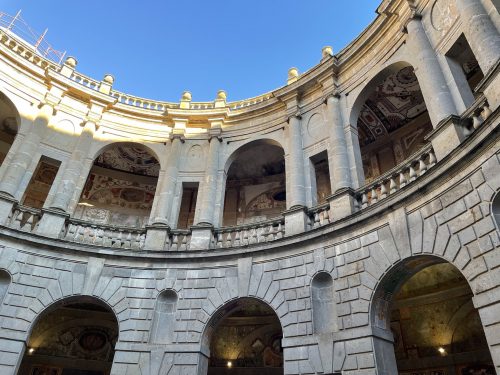
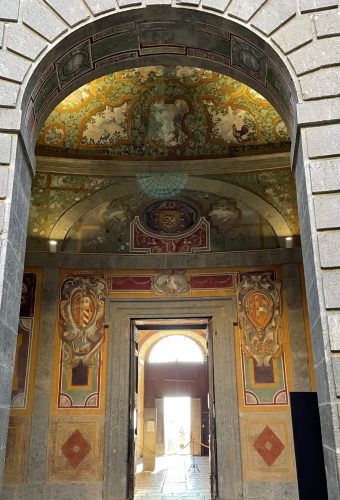
Then, as you go up the Royal Stairs, you can see depictions of the Farnese’s many territories, these beautiful landscapes reinforced the idea of the Farnese as powerful and influential. In addition, the dome above the staircase includes the Farnese’s coat of arms with 6 lily flowers.
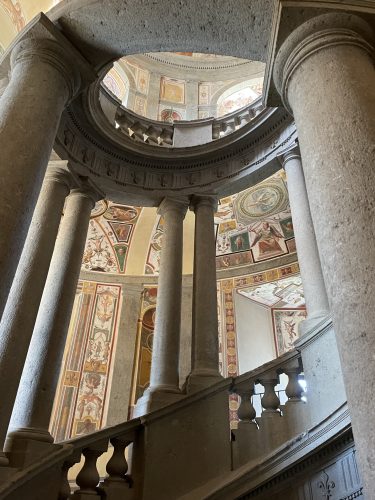
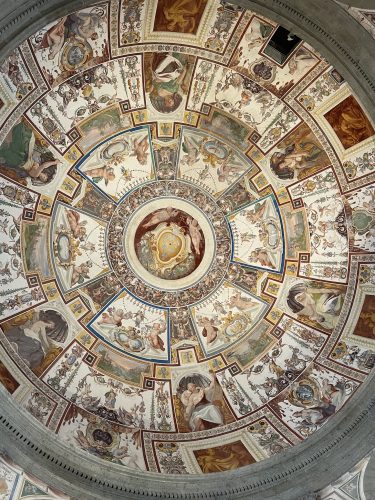
Entering the room on the second floor you can see the Loggia of Hercules, a room depicting the story of how Hercules brought water to the land of the Farnese family and made it fertile, providing food and work for its citizens.
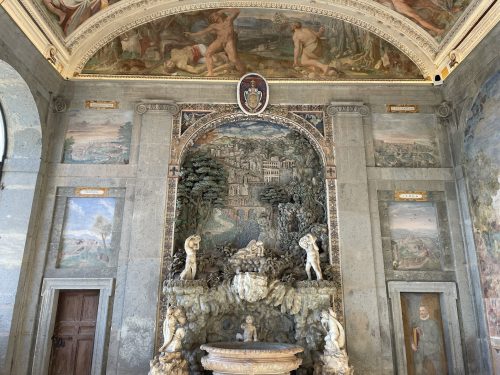
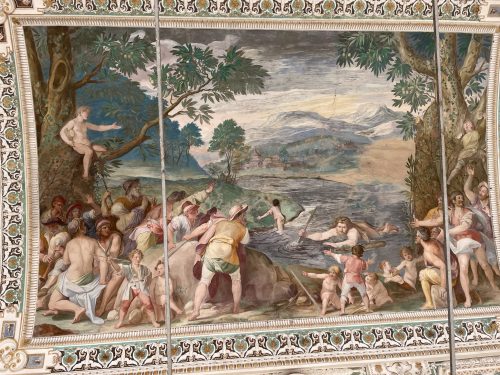
Then you step into the chapel built by Federico Zuccari after his brother Taddeo Zuccari, who was originally working on the project, passed away. There is an alter and in the center of its dome there is an image of Christ creating the world.
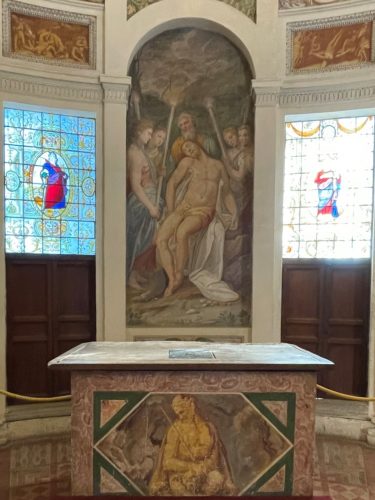
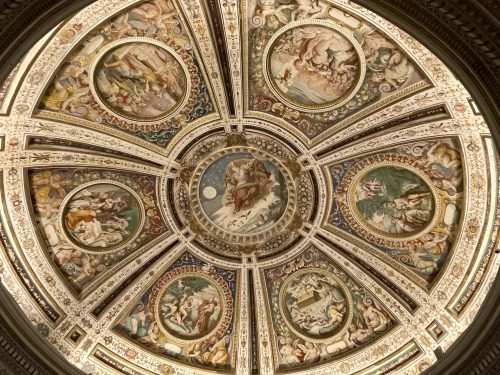
Next you can enter the Sala de Fasti Farnesiani where big paintings adorn the walls depicting scenes of Farnese family members marrying into European royalty, the role of the family in the war against protestants and their participation in the Council of Trent.
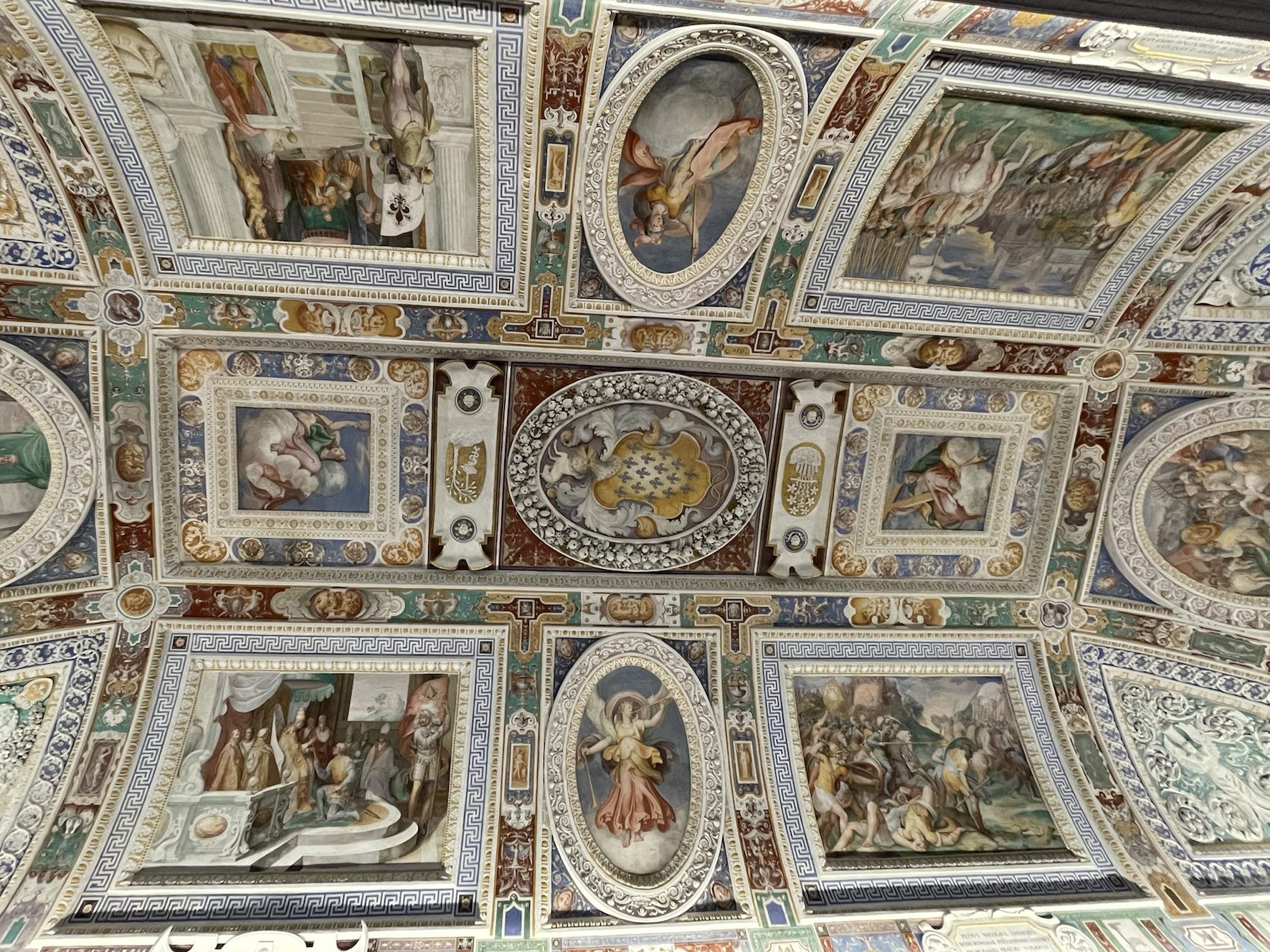
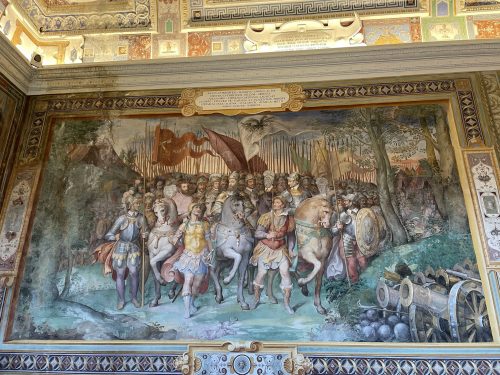
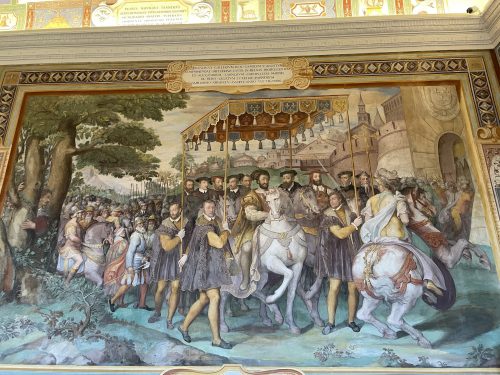
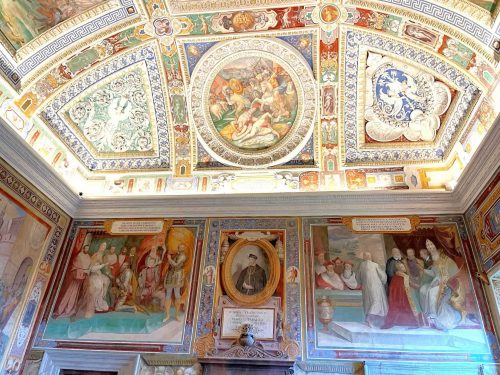
Walking onto the following rooms you encounter Alessandro Farnese’s living spaces. He studied, meditated, and slept surrounded by art, carefully curated to guide him as he acted to enact God’s will on Earth. In these rooms scenes from mythology and characters from the Renaissance are intertwined to show the appreciation of past and present ideals and how they complement each other.
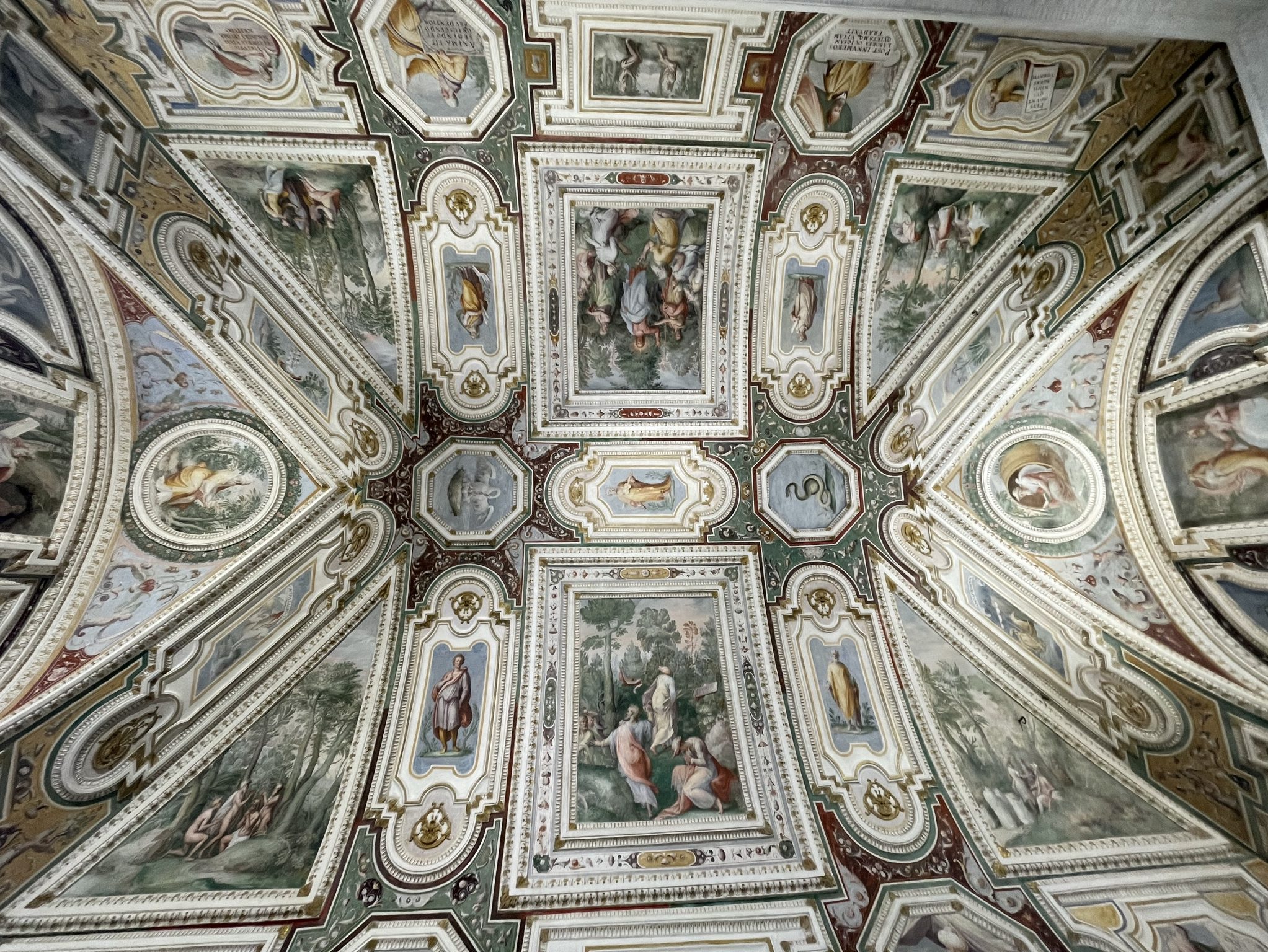
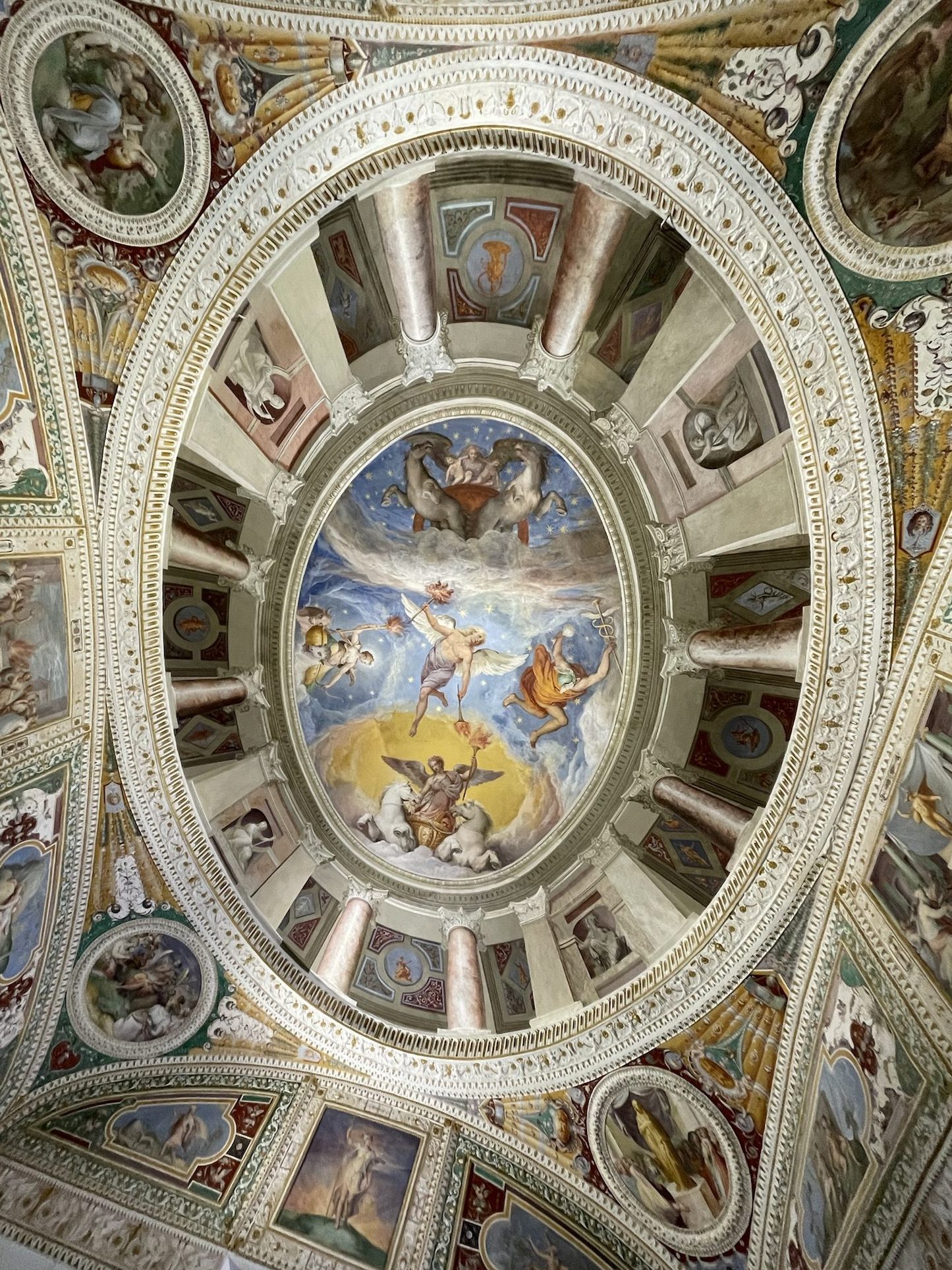
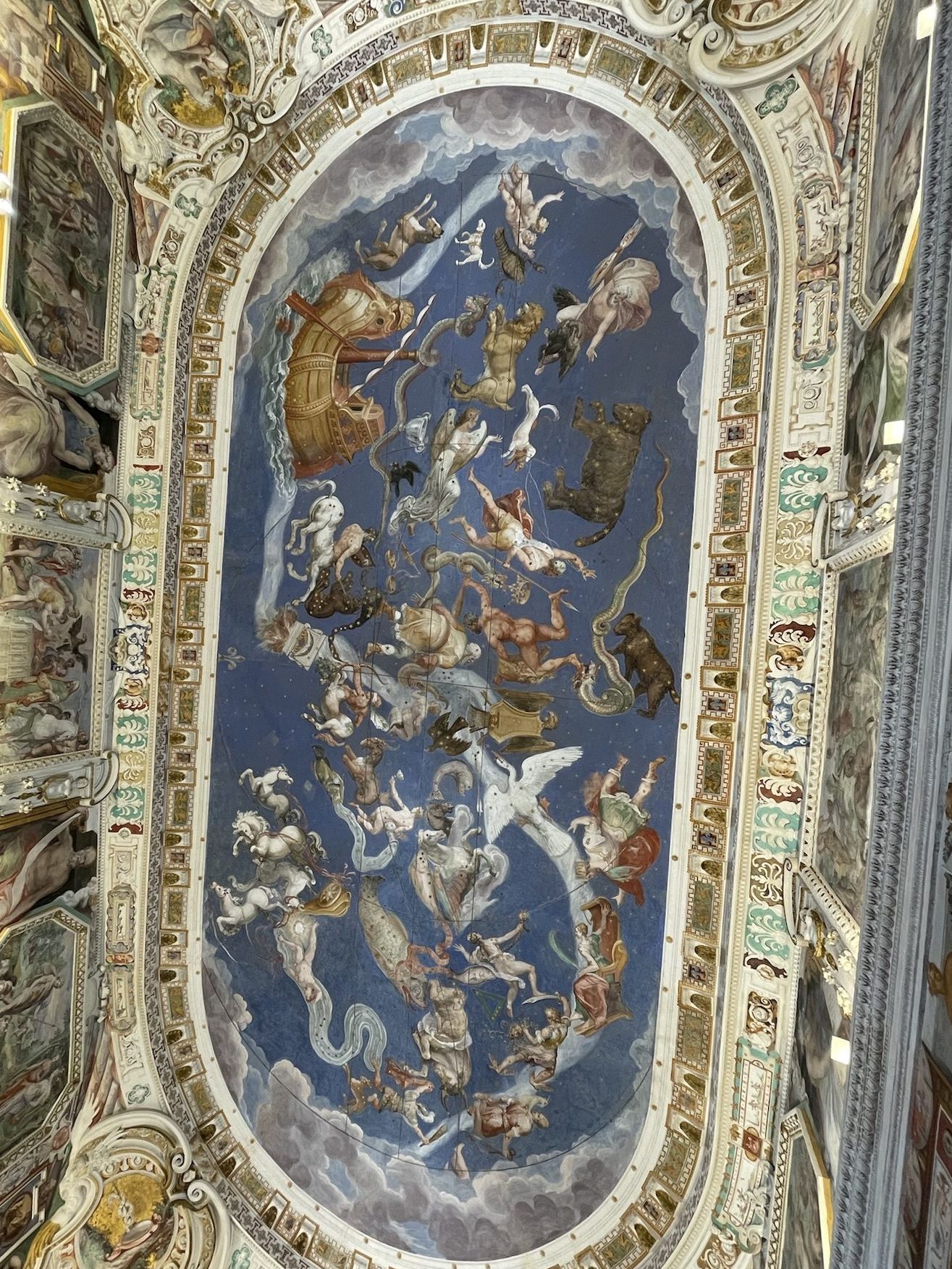
Continuing onto the shared spaces we can find the dining room, decorated with motifs of penance designed to prevent the gluttony and greed often seen in wealthy families of the time.
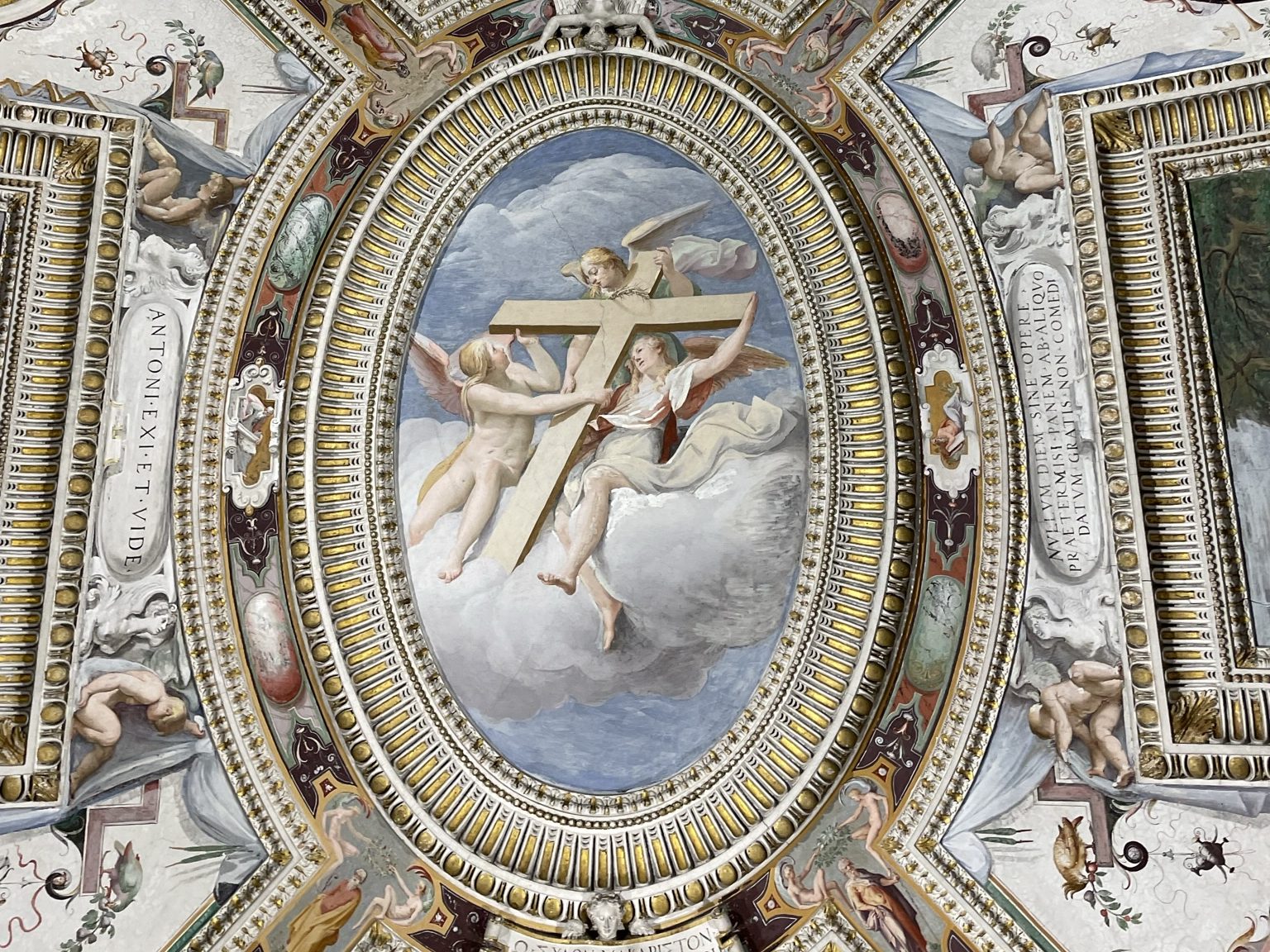
Next to this room we can encounter the Room of Judgement where Alessandro Farnese took on the role of judge for the community. This room has depictions of King Salomon, who represents fair leader and an example of righteousness for Christian judges.
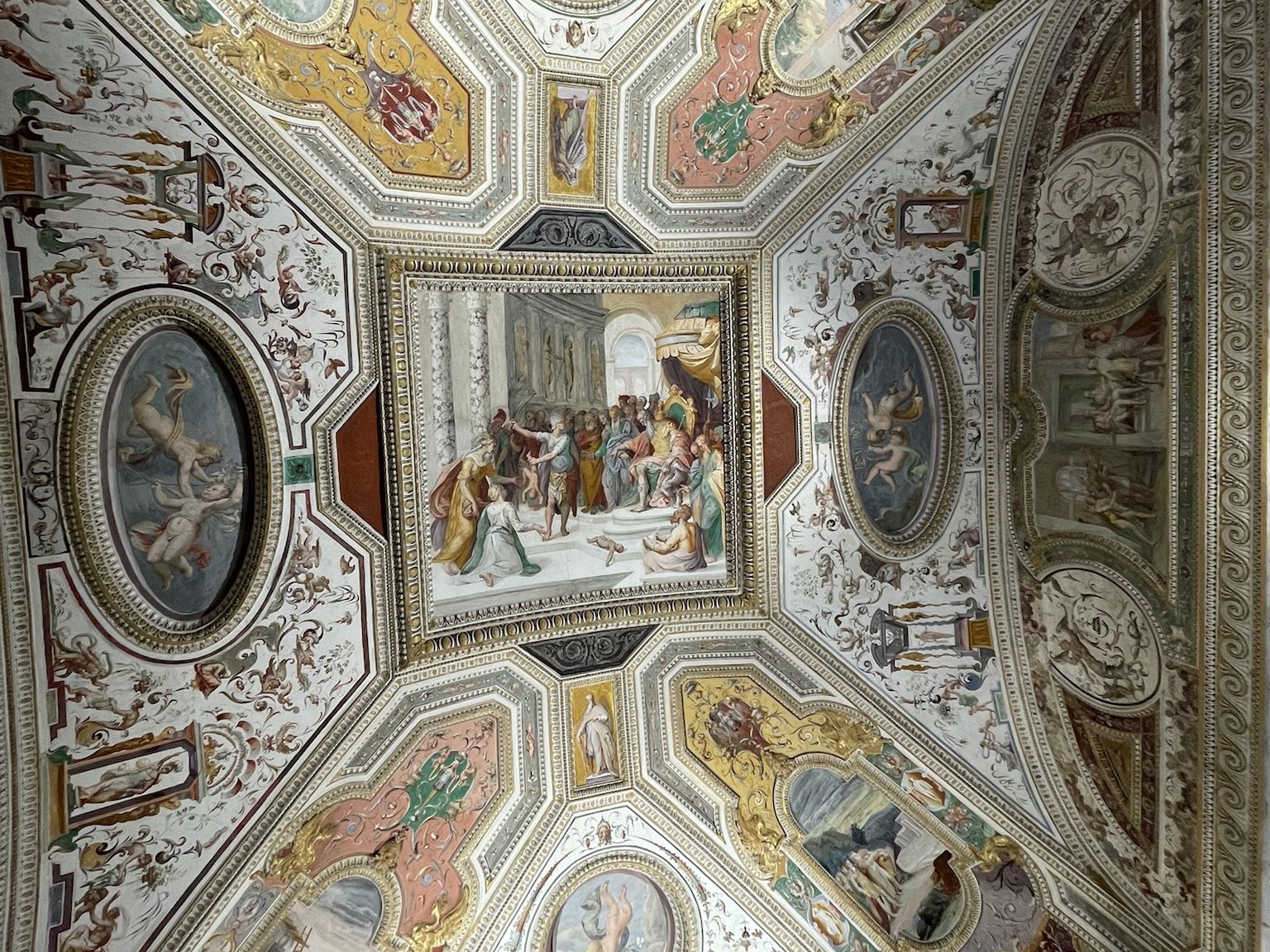 Room of Judgement Ceiling
Room of Judgement Ceiling
Afterwards you can find the Room of the World depicting several maps of the continents along the walls and the portraits of Christopher Columbus, Americo Vespucci, Hernando Cortes and other Europeans who explored the American continent. It also contains a map of Italy and a map of Judea.
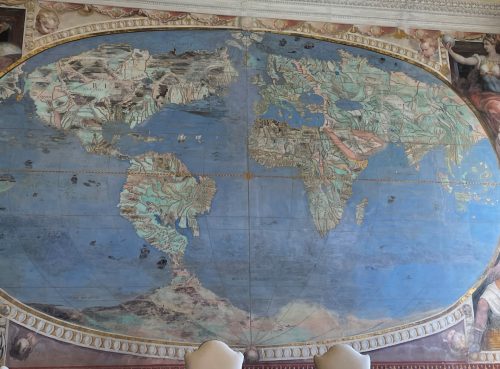
Finally we visited the Room of the Angels where meetings were often held due to its incredible acoustics.
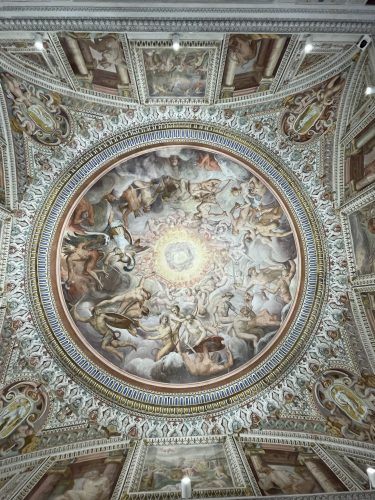
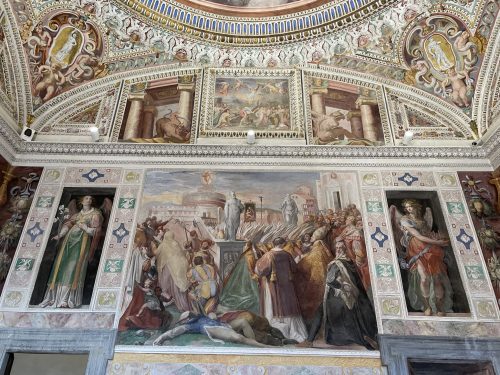
After exiting the villa we continued onto the gardens. The Lower Gardens are characterized by hedges in geometrical shapes and rose gardens.
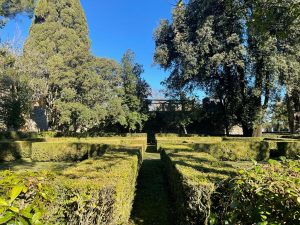
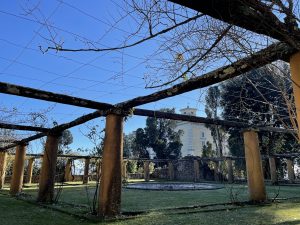
Then we walked through the chestnut forest to the Upper Gardens decorated with statues of the Citizens of Caprarola at work and fountains often visited during the summer.
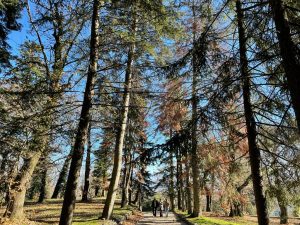
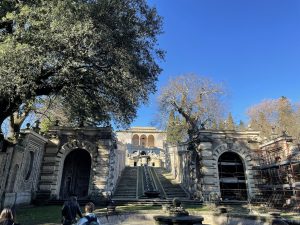
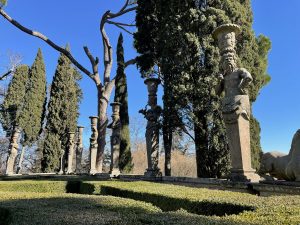
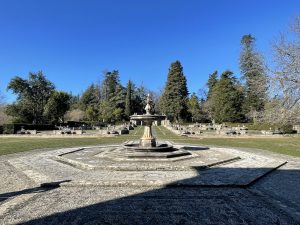
I really enjoyed learning about the history of the family and imagining what life was like during the 1500s and 1600s. The art and sculptures were very impressive and walking through them felt magical. I look forward to visiting more villas in the region. After our tour of Villa Farnese we had a traditional Italian meal in Caprarola and got on a bus back to campus.